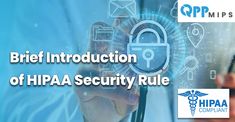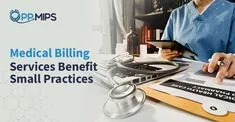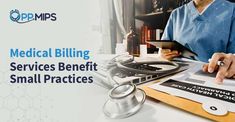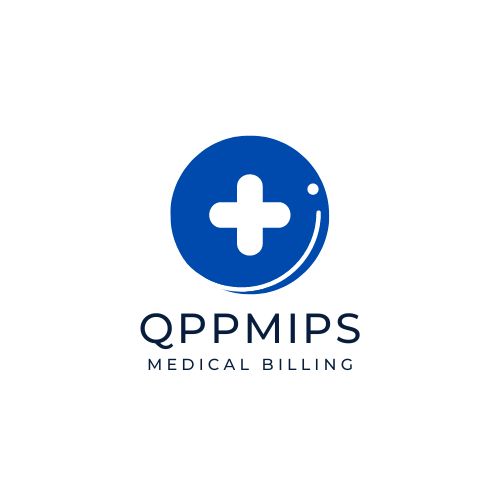-
How Technology Solutions Transform Patient Hand Surgery Medical Billing?

In the intricate landscape of healthcare, efficient billing and collections processes are vital for the sustainability of medical practices, particularly in specialized areas like hand surgery. This article explores how technology solutions can revolutionize patient hand surgery medical billing and collections, addressing challenges and enhancing efficiency. Challenges in Patient Hand Surgery Medical Billing Hand Surgery…
-
Benefit From ACO Quality Measures Reporting Services

In today’s healthcare landscape, Accountable Care Organizations (ACOs) play a pivotal role in improving patient outcomes while controlling costs. A crucial aspect of ACO operations is the reporting of quality measures, which enables providers to demonstrate their commitment to delivering high-quality care. However, navigating the complexities of quality reporting can be challenging for healthcare organizations.…
-
Guidelines for Urology Medical Billing Services For Mips Reporting

Urology medical billing is a crucial aspect of healthcare revenue management that requires meticulous attention to detail and adherence to specific guidelines. From accurate documentation to compliant coding practices, ensuring that billing processes meet industry standards is essential for healthcare providers to receive proper reimbursement and avoid potential compliance issues. In this article, we will…
-
Community Central Medical Billing Services in USA for Medical Care

Medical billing is paramount for the smooth operation of medical facilities. Community Central Medical Billing Services stands at the forefront, offering comprehensive solutions tailored to the unique needs of medical practices across the United States. Understanding Community Central Medical Billing Services Community Central Medical Billing is a leading provider of billing solutions designed to streamline…
-
Billings Neurology Services for Reporting in USA For Clients

Billings Neurology Services for Reporting in USA For Clients play a crucial role in healthcare, focusing on diagnosing and treating disorders affecting the nervous system.
-
Oncology Service Leesburg Reporting Services in USA Guide to Billing, Coding, and Development

In the realm of oncology, accurate reporting is paramount for effective patient care, streamlined operations, and ensuring compliance with regulatory standards. Leesburg, USA, stands as a hub for advanced medical services, including Oncology Reporting Services. This article dives deep into the nuances of oncology service reporting in Leesburg, focusing on billing, coding, and development aspects.…
Mips Reporting Services
Accurate Mips Reporting Services USA
Our services

Diagnostic Radiology

Oncology

General Surgery

Neurology
MIPS Reporting Services

ACO Reporting

Cardiology Billing

Medical Billling

Urology Billing
Contact us
We’d love to hear from you! Drop us a line below and we’ll do our best to get back to you within one business day.
Best Reporting Services
Embarking on a journey through the intricate landscape of healthcare evaluation, our blog post delves into the multifaceted world of “performance year, performance period, quality measures, eligible clinicians, improvement activities,” and more. Unraveling the complexities of the Quality Payment Program (QPP), we navigate the nuances of final scores, bonus points, and the pivotal role small practices play in this dynamic arena. Join us as we explore episode-based measures, incentive payment systems, and the continuous evolution of Medicare ACO Quality Reporting, offering insights that resonate with individual clinicians and the broader healthcare community.
In the realm of healthcare performance evaluation, the Quality Payment Program (QPP) involves various metrics such as performance year, quality measures, and improvement activities. Clinicians aim for a favorable final score, considering factors like small practices, episode-based measures, and the incentive payment system. The QPP landscape includes cost and quality categories, with continuous improvement emphasized. Key elements like the CMS QPP website and MIPS value pathways shape the evolving Medicare quality reporting system.
Healthcare evaluation, terms like “performance year, performance period, quality measures, eligible clinicians,” and more are the pillars of the Quality Payment Program (QPP). This intricate system encompasses crucial elements such as final scores, bonus points, and the significance of small practices. Our exploration extends to episode-based measures, the incentive payment system, and the evolving landscape of Medicare quality reporting. Join us as we unravel the complexities that impact individual clinicians and shape the broader healthcare domain.
Location
New York
Client
QPMIPS
Project Type
Reporting And Billing Services
Medical practitioners’ approaches to patient care and medical mistake prevention are changing as a result of technological advancements, notably in the area of predictive analytics. This essay explores the complex relationship between predictive analytics and patient safety and the vital role that they play in the US healthcare system.
Comprehending Patient Safety
The Value Of Patient Security
Patient safety is essential to providing quality healthcare; it is not merely a catchphrase. The essay examines why, in the context of healthcare, putting patient safety first is indisputable.
Medical Mistakes And Their Consequences
This section delves into the harsh realities of medical errors and highlights the significant effects they can have on patient outcomes and satisfaction.
Healthcare Predictive Analytics
Overview And Importance
This section deconstructs the idea of predictive analytics and emphasizes its importance in proactively spotting any problems before they become more serious.
Uses In Medical Treatment
This section examines the real-world uses of predictive analytics and demonstrates how medical professionals can use data to improve patient outcomes.
The Function Of Medical Device Reporting System
In Guaranteeing Patient Safety
This section reveals the vital function that the medical device reporting system plays in preserving patient safety and highlights the necessity of healthcare professionals taking an active participation in it.
The Duties Of Healthcare Professionals
This section emphasizes the need of a team effort to protect patient safety by outlining the duties of healthcare providers in reporting adverse events.
Adverse Occurrences And Reporting
Determining Crucial Actions
This section examines the procedures for recognizing and disclosing adverse events and sets healthcare providers up for success in terms of operational efficiency.
Guaranteeing Effective Operations
This section highlights the significance of operational efficiency in managing unfavorable occurrences and offers tips for making sure the reporting system runs well.
Practical Advice For Medical Professionals
Raising Patient Satisfaction Levels
This section delves into how healthcare practitioners can improve patient satisfaction levels by using data-driven decision-making, thereby unlocking the potential of actionable insights.
Making Knowledgeable Choices
In order to drive excellence in patient care, this section emphasizes the importance of data analytics and how it may help healthcare workers make educated decisions.
Medical Device Reports:
Putting Quality Care On The Correct Track
Comprehending Device User Facilities
This section provides an overview of device user facilities and highlights their critical function in ensuring patient safety.
Notifying Adverse Occurrences
This section highlights the importance that medical device reports play in guiding healthcare workers on how to properly report adverse occurrences and in directing patient treatment.
High-Quality Treatment And Contented Patients
The Function Of Medical Experts
Examining the direct connection between medical professionals and high-quality treatment, this section highlights the duty of care providers to guarantee patient happiness.
Maintaining Public Wellness
This section looks at how specific healthcare practices affect community well-being overall, highlighting the wider impact on public health.
Using Predictive Analytics to Identify Medical Mistakes
Identifying Pharmaceutical Errors
This section delves into the particulars of pharmaceutical errors and examines how predictive analytics can be a key component of early diagnosis and prevention.
Dealing With Misuse And Inappropriate Drugs
This section addresses delicate topics including drug errors and abuse, with a focus on how technology may protect patients from harm.
Analytics in Healthcare and Provider Accountabilities
Making Use Of Electronic Medical Records
This section explores the possibilities of electronic health records and how healthcare analytics can use them to provide complete patient care.
Taking Social Determinants Of Health Into Account
In light of the fact that socioeconomic determinants have an effect on healthcare outcomes, this section promotes a patient-centered approach.
Medical Professionals’ Importance
Their duty to warn, and the quality of their care. This section examines the ethical obligations that come with being a doctor, including the need to warn and guarantee quality care.
Dealing With Remissions
This section examines the problem of hospital readmissions and offers solutions for healthcare practitioners to reduce the rate of occurrence and enhance patient outcomes.
Electronic Medical Billing And Health Records
Handling Cases Of Child Abuse
This section discusses the delicate subject of child abuse and how electronic health records can help with the efficient handling and reporting of such occurrences.
Getting Around The Statute Of Limitations
This section offers guidance to healthcare workers regarding the legal landscape, including tips on how to ensure accountability and navigate statute limitations.Healthcare Sector and Predictive Analytics
Violence And Abuse Among Partners
This section argues for a comprehensive approach to patient safety while shedding light on the function of predictive analytics in identifying violence and abuse against partners.
Improving Procedures For Medical Billing
This section addresses how predictive analytics might simplify financial transactions in the healthcare sector, emphasizing its effect on medical billing procedures.
Medical Certification And Coding
The Function Of Expert Coders
This section examines how coding specialists’ skill assures accuracy in billing and medical records, acknowledging their critical role in the process.
How Insurance Claims Are Affected
This section examines how precise coding affects insurance claims directly, with a focus on the financial effects on healthcare providers.
Healthcare’s Future: Using Predictive Analytics
This section examines how predictive analytics will continue to influence patient care in the future while also examining prospective improvements in the field of healthcare.
In Summary
To sum up, the incorporation of predictive analytics into patient safety endeavors represents a noteworthy advancement in the healthcare sector. The environment of patient care is always changing as medical practitioners make use of cutting-edge technologies, reporting systems, and actionable insights. It is not just a decision, but also an obligation for healthcare professionals who are dedicated to providing exceptional care, to embrace these innovations.
Best Reporting Services
The Shared Savings Program, a Medicare initiative, encourages collaborative efforts among clinicians to enhance patient care and outcomes. Medicare CQMs (Clinical Quality Measures) set a benchmark for assessing and reporting healthcare quality, ensuring data completeness meets established threshold. Individual clinicians navigate the complex web of episode-based cost measures, aiming to optimize their performance. MIPS points and Value Pathways shape the incentive structure, rewarding clinicians for delivering high-quality care. The Medical Reporting Services system acts as a conduit for transparently communicating healthcare performance, fostering continuous improvement. In essence, this interconnected framework guides individual clinicians through a landscape where each aspect, from continuous days to MIPS Reporting value pathways, contributes to a comprehensive and nuanced understanding of their role in the broader healthcare ecosystem.
QPP MIPS Reporting is a leading online service in the USA, specializing in streamlining Quality Payment Program (QPP) reporting for healthcare providers. With its user-friendly interface and advanced features, QPP MIPS Reporting Services In USA simplifies the complex process of reporting performance data for the Merit-based Incentive Payment System (MIPS). It ensures accuracy, compliance, and efficiency, allowing healthcare professionals to focus on delivering exceptional patient care. Trusted by providers nationwide, QPP MIPS Reporting is dedicated to helping practitioners navigate the intricacies of MIPS effortlessly and succeed in an ever-evolving healthcare landscape with Medical Billing Services USA.
